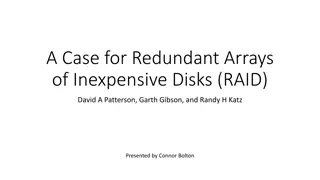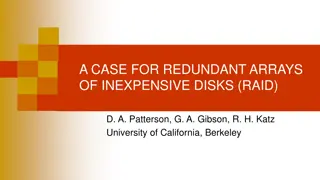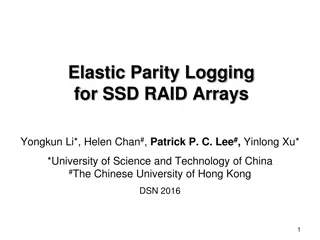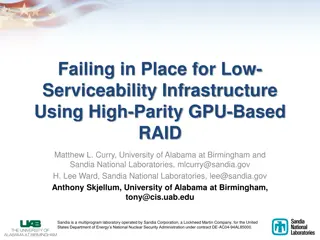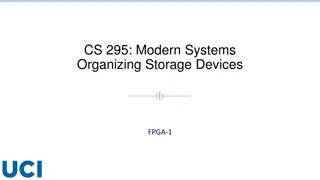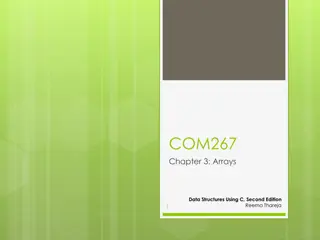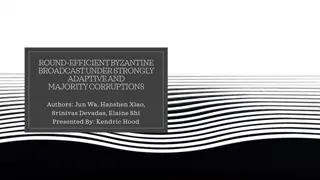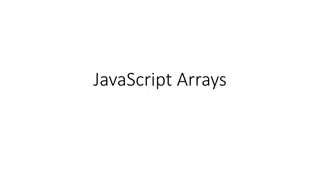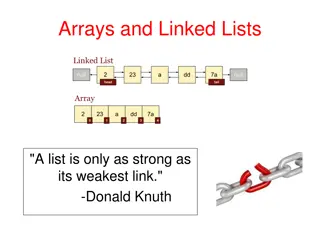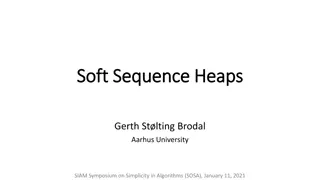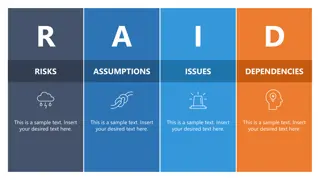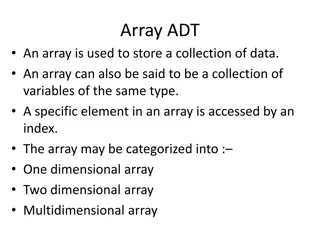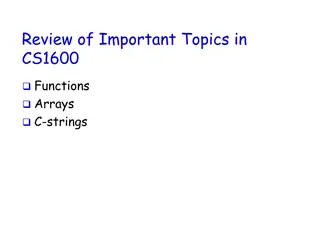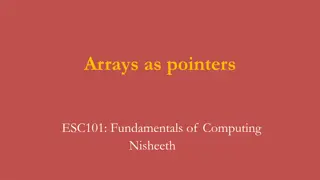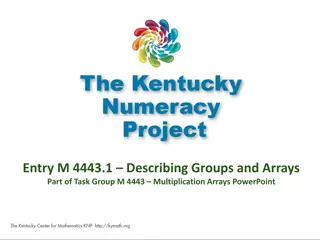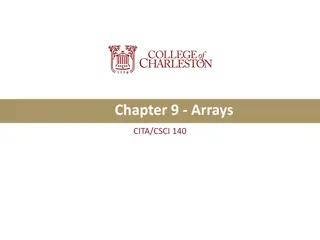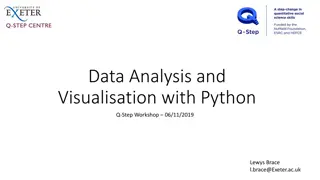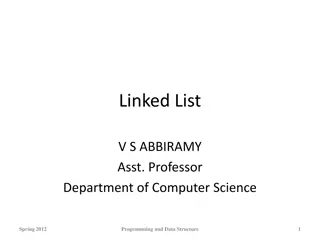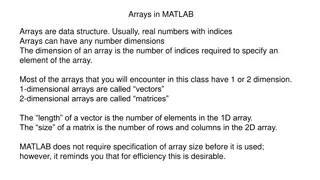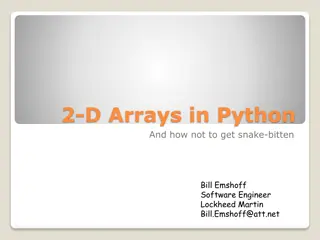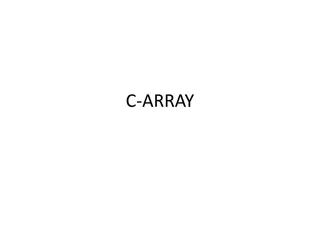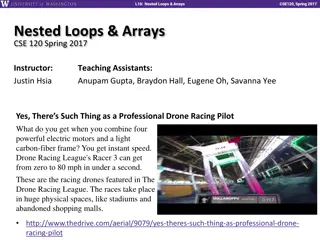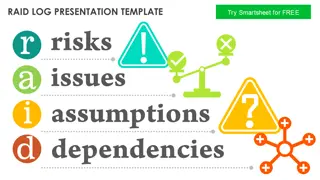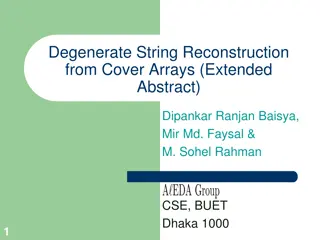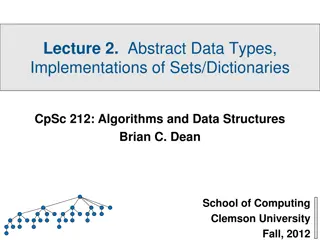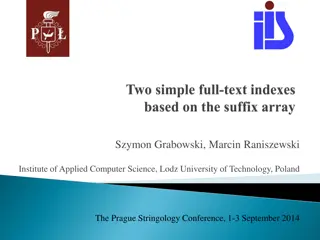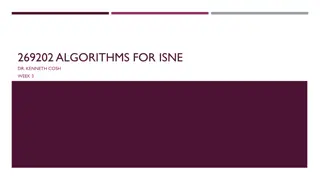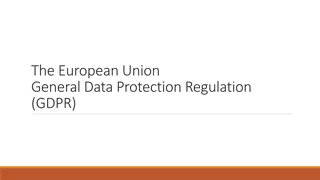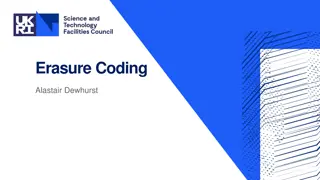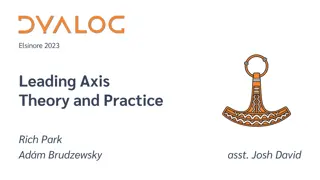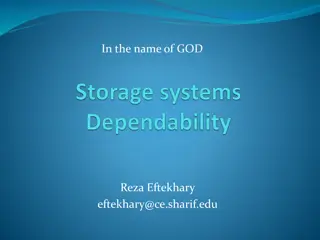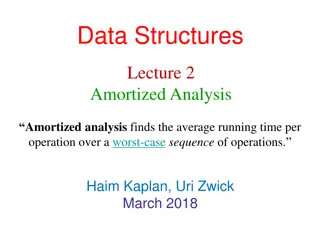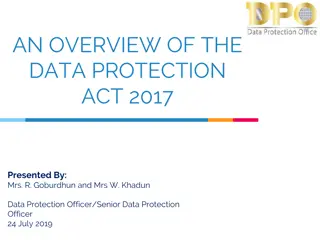I/O-Efficient Protection Against Silent Data Corruptions in RAID Arrays
This paper discusses the risks of silent data corruptions in RAID arrays, which are challenging to detect and can lead to serious consequences. It presents the concept of integrity protection to enhance RAID systems' ability to detect and recover from such corruptions efficiently. The paper investigates existing integrity primitives, proposes two I/O-efficient protection schemes, and conducts evaluations to assess their performance and detection capabilities.
Download Presentation

Please find below an Image/Link to download the presentation.
The content on the website is provided AS IS for your information and personal use only. It may not be sold, licensed, or shared on other websites without obtaining consent from the author. Download presentation by click this link. If you encounter any issues during the download, it is possible that the publisher has removed the file from their server.
E N D
Presentation Transcript
Toward I/O-Efficient Protection Against Silent Data Corruptions in RAID Arrays Mingqiang Li and Patrick P. C. Lee The Chinese University of Hong Kong MSST 14 1
[Patterson et al., SIGMOD 88] RAID RAID is known to protect data against disk failures and latent sector errors How it works? Encodes k data chunks into m parity chunks, such that the k data chunks can be recovered from any k out of n=k+m chunks 2
Silent Data Corruptions Silent data corruptions: Data is stale or corrupted without indication from disk drives cannot be detected by RAID Generated due to firmware or hardware bugs or malfunctions on the read/write paths More dangerous than disk failures and latent sector errors 3 [Kelemen, LCSC 07; Bairavasundaram et al., FAST 08; Hafner et al., IBM JRD 2008]
Silent Data Corruptions Lost write: Stale Torn write: updated Stale Misdirected writes/reads: (a) Misdirected writes (b) Misdirected reads 4
Silent Data Corruptions Consequences: User read: Corrupted data propagated to upper layers User write: Parity pollution Data reconstruction Corruptions of surviving chunks propagated to reconstructed chunks 5
Integrity Protection Protection against silent data corruptions: Extend RAID layer with integrity protection, which adds integrity metadata for detection Recovery is done by RAID layer Goals: All types of silent data corruptions should be detected Reduce computational and I/O overheads of generating and storing integrity metadata Reduce computational and I/O overheads of detecting silent data corruptions 6
Our Contributions A taxonomy study of existing integrity primitives on I/O performance and detection capabilities An integrity checking model Two I/O-efficient integrity protection schemes with complementary performance gains Extensive trace-driven evaluations 7
Assumptions At most one silently corrupted chunk within a stripe If a stripe contains a silently corrupted chunk, the stripe has no more than m-1 failed chunks due to disk failures or latent sector errors Otherwise, higher-level RAID is needed! m-1=1 D0 D1 D2 D3 D4 D5 P0 P1 8
How RAID Handles Writes? Full-stripe writes: Parity chunks are computed directly from data chunks to be written chunks (no disk reads needed) Partial-stripe writes: RMW (Read-modify-writes) for small writes Read all touched data chunks and all parity chunks Compute the data changes and the parity chunks Write all touched data chunks and parity chunks RCW (Reconstruct-writes) for large writes Read all untouched data chunks Compute the parity chunks Write all touched data chunks and parity chunks 9
Existing Integrity Primitives Self-checksumming / Physical identity [Krioukov et al., FAST 08] Data and metadata are read in a single disk I/O Inconsistency implies data corruption Cannot detect stale or overwritten data 10
Existing Integrity Primitives Version Mirroring [Krioukov et al., FAST 08] Keep a version number in the same data chunk and m parity chunks Can detect lost writes Cannot detect corruptions 11
Existing Integrity Primitives Checksum Mirroring [Hafner et al., IBM JRD 2008] Keep a checksum in the neighboring data chunk (buddy) and m parity chunks Can detect all silent data corruptions High I/O overhead on checksum updates 12
Comparisons No additional I/O overhead Additional I/O overhead Question: How to integrate integrity primitives into I/O-efficient integrity protection schemes? 13
Integrity Checking Model Two types of disk reads: First read: sees all types of silent data corruptions Subsequent reads: see a subset of types of silent data corruptions Observation: A simpler and lower-overhead integrity checking mechanism is possible for subsequent-reads 14
Checking Subsequent-Reads Seen by subsequent-reads 15 No additional I/O overhead Subsequent-reads can be checked by self-checksumming and physical identity without additional I/Os Integrity protection schemes to consider: PURE (checksum mirroring only), HYBRID-1, and HYBRID-2 15
Integrity Protection Schemes Hybrid-1 Physical identity + self-checksumming + version mirroring A variant of the scheme in [Krioukov et al., FAST 08] 16
Integrity Protection Schemes Hybrid-2 Physical identity + self-checksumming + checksum mirroring A NEW scheme 17
Additional I/O Overhead for a Single User Read/Write Switch point: Both Hybrid-1 and Hybrid-2 outperform Pure in subsequent-reads Hybrid-1 and Hybrid-2 provide complementary I/O advantages for different write sizes 18
Choosing the Right Scheme If choose Hybrid-1 If choose Hybrid-2 = average write size of a workload (estimated through measurements) = RAID chunk size The chosen scheme is configured in the RAID layer (offline) during initialization 19
Evaluation Computational overhead for calculating integrity metadata I/O overhead for updating and checking integrity metadata Effectiveness of choosing the right scheme 20
Computational Overhead Implementation: GF-Complete [Plank et al., FAST 13] and Crcutil libraries Testbed: Intel Xeon E5530 CPU @ 2.4GHz with SSE4.2 Overall results: ~4GB/s for RAID-5 ~2.5GB/s for RAID-6 RAID performance is bottlenecked by disk I/Os, rather than CPU 21
I/O Overhead Trace-driven simulation 12 workload traces from production Windows servers [Kavalanekar et al., IISWC 08] RAID-6 with n=8 for different chunk sizes 22
I/O Overhead Pure can have high I/O overhead, by up to 43.74% I/O overhead can be kept at reasonably low (often below 15%) using the best of Hybrid-1 and Hybrid-2, due to I/O gain in subsequent reads More discussions in the paper 43.74% 23
Choosing the Right Scheme Accuracy rate: 34/36 = 94.44% For the two inconsistent cases, the I/O overhead difference between Hybrid-1 and Hybrid-2 is small (below 3%) 24
Implementation Issues Implementation in RAID layer: Leverage RAID redundancy to recover from silent data corruptions Open issues: How to keep track of first reads and subsequent reads? How to choose between Hybrid-1 and Hybrid-2 based on workload measurements? How to integrate with end-to-end integrity protection? 25
Conclusions A systematic study on I/O-efficient integrity protection schemes against silent data corruptions in RAID systems Findings: Integrity protection schemes differ in I/O overheads, depending on the workloads Simpler integrity checking can be used for subsequent reads Extensive evaluations on computational and I/O overheads of integrity protection schemes 26


